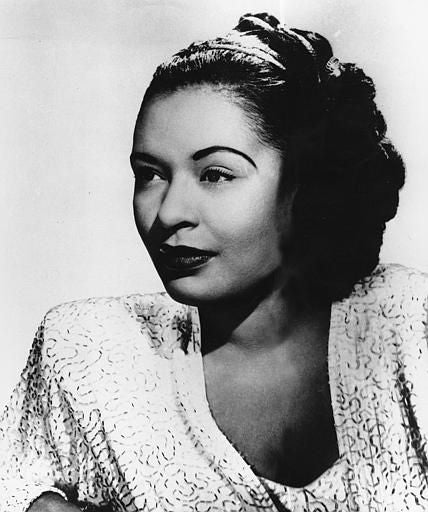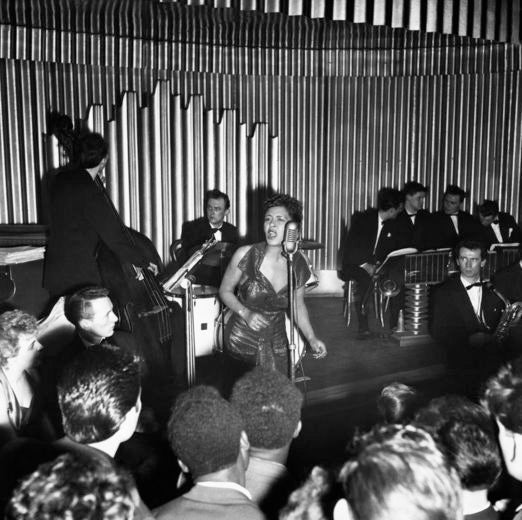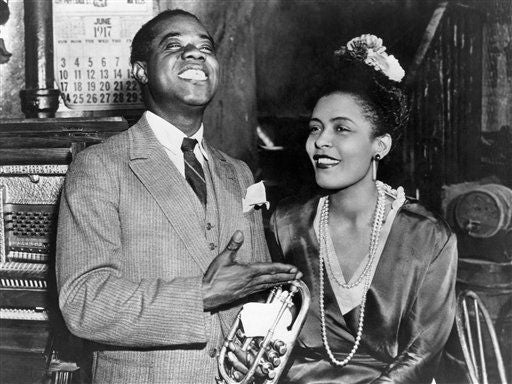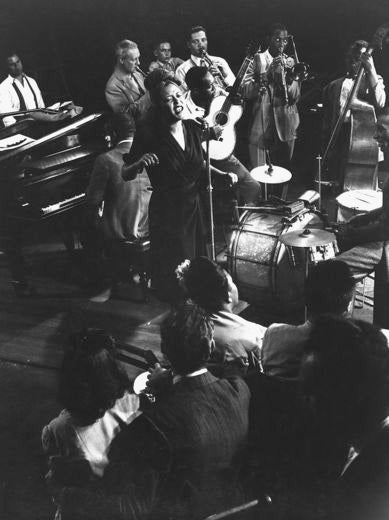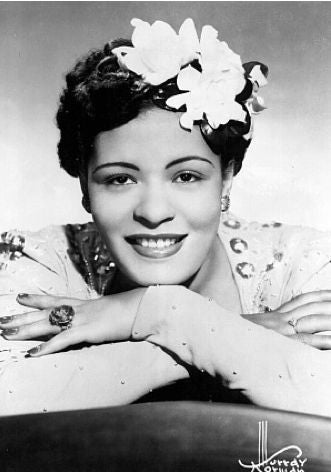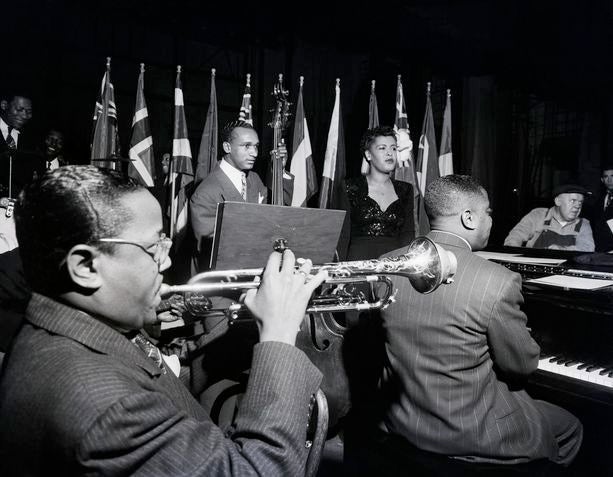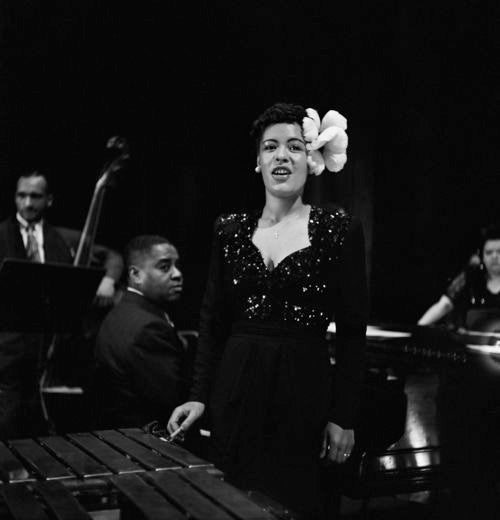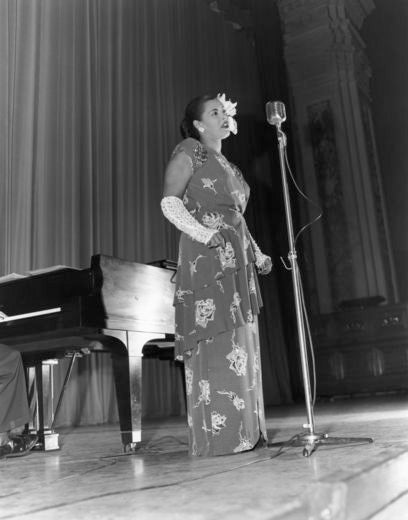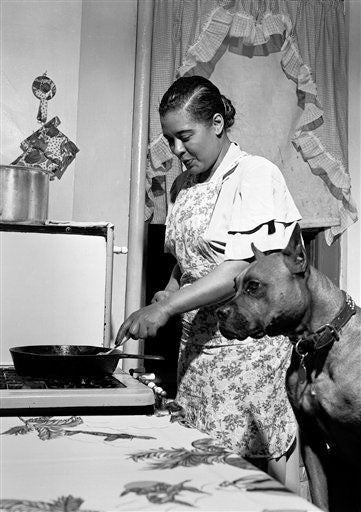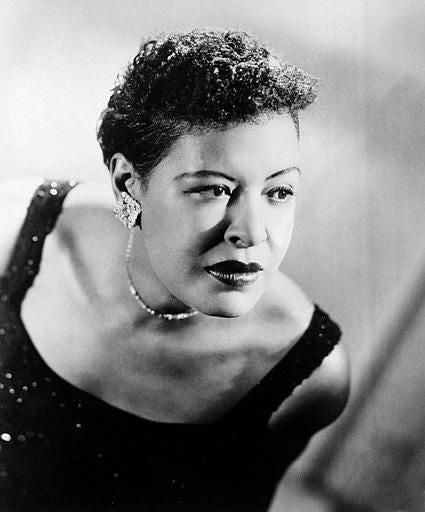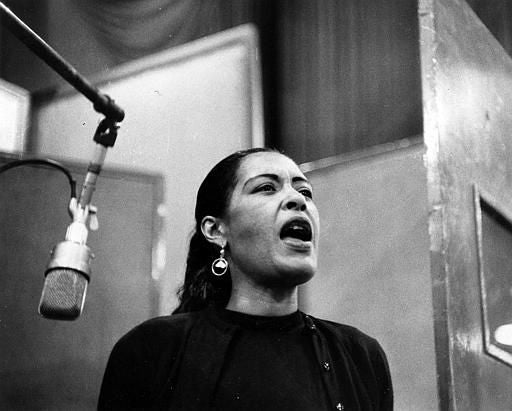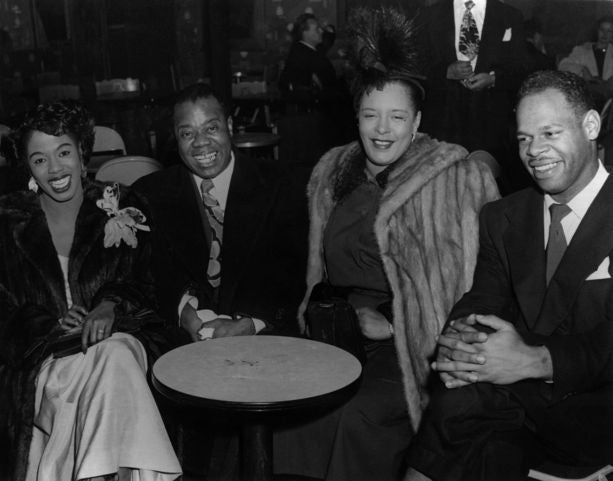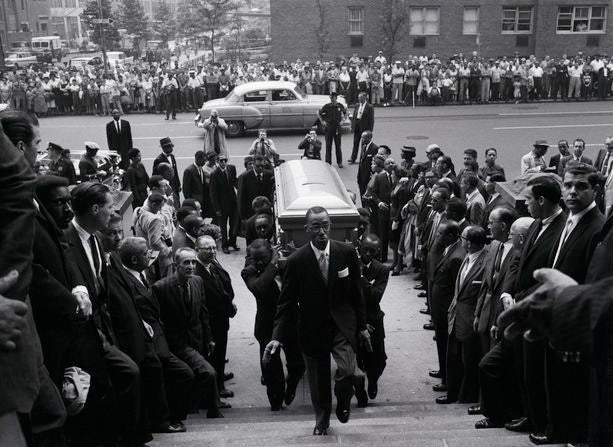Raised mostly by extended family in Philly, Billie followed her mother to Harlem as a teen where she fell into prostitution. After being arrested and imprisoned for turning tricks, Billie began singing with a neighborhood musician.
Here she is singing at an integrated venue.
Aside from her music, Billie perfected a signature style that contemporary women still draw from – the easy grace of a flower in one’s hair. This image became one of Billie’s most iconic. From the arched eyebrows, the painted lips, round ring and of course, her trademark flower, this photo can be found around the world.
Billie recorded for Columbia Records until she received the poem “Strange Fruit” by a New York schoolteacher. Initially afraid to perform the cut for fear of retaliation, Billie said it reminded her of her father’s death. When her label decided “Strange Fruit” was too heavy for them to release, Billie laid the song with Commodore Records. While it didn’t receive much airplay, it became one of her biggest songs.
While Billie had her music under control, that wasn’t always so with her personal life. She married trombonist Jimmy Monroe in 1941, but crept around with trumpeter Joe Guy, who also served as her drug dealer. In the Diana Ross-led film “Lady Sings The Blues,” Guy was the inspiration for the character famously called “Piano Man.”
In 1947, Billie was arrested for narcotics (opium) possession in New York and then later in San Francisco. Finally, she lost her New York City Cabaret Card, which kept her from working in clubs for the last 12 years of her life, with the exception of the Ebony Club in 1948.
On July 17, 1959 Ms. Holiday died of heart failure brought on by congestion of the lungs. Here fans and friends of the late jazz singer surround her casket as it’s carried into church for a solemn requiem mass. Ultimately, Billie garnered numerous awards and an induction into the Rock and Rock Hall of Fame, but her biggest contribution has been her lasting legacy carried on by today’s soul singers.
